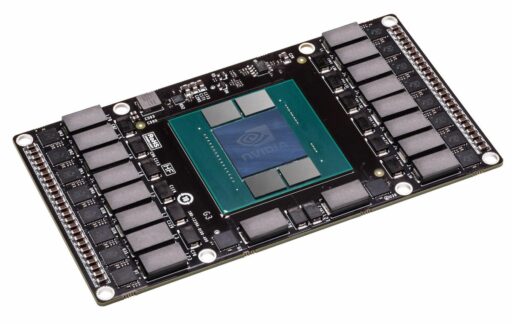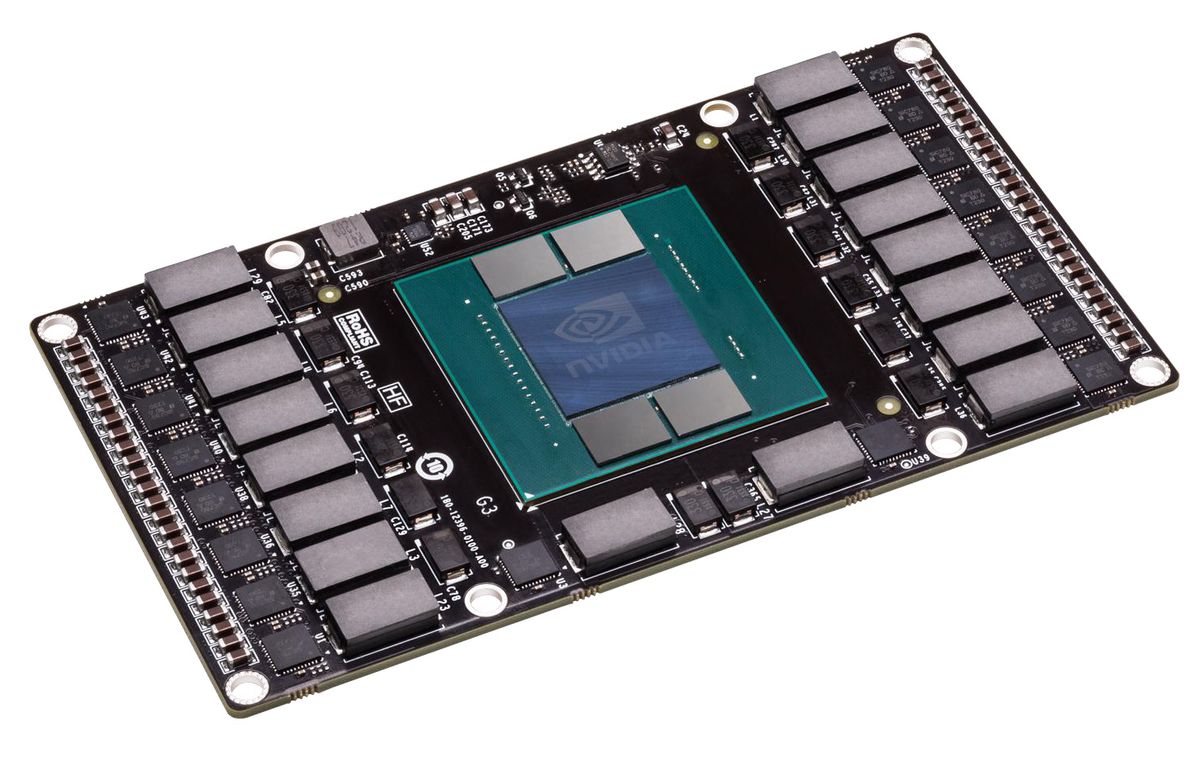The landscape of crypto mining is continually evolving, and with it, the demand for powerful and efficient GPUs. As we move through 2023, certain graphics cards have emerged as the top contenders for crypto mining, thanks to their performance, energy efficiency, and long-term viability. This article delves into the latest advancements from NVIDIA, AMD, and Intel, examines the shifts in the mining scene post-Ethereum merge, and explores the best GPU options for both seasoned miners and hobbyists alike. We’ll also look at the ongoing hardware arms race and what it means for those looking to invest in mining hardware.
Key Takeaways
- NVIDIA, AMD, and Intel are leading the market with GPUs that offer significant advancements in mining efficiency and energy conservation.
- The Ethereum merge has prompted miners to adapt to new coins, with many seeking GPUs that can efficiently mine a variety of cryptocurrencies.
- Future-proof mining rigs focus on energy efficiency and GPUs with the best long-term potential to maximize returns on investment.
- Affordable GPU options are available for hobbyists, balancing cost and performance to enable entry-level mining without overspending.
- The competition among NVIDIA, AMD, and Intel is intense, with each manufacturer vying for loyalty from crypto miners through innovations and improved supply chain management.
Evaluating the Top Contenders: GPUs Dominating the Crypto Mining Scene


NVIDIA’s Latest Advancements in Mining Efficiency
In the ever-evolving world of crypto mining, NVIDIA has once again positioned itself at the forefront with its latest GPU offerings. These new models boast significant improvements in power and energy efficiency, setting a new standard for the industry. With the upcoming Bitcoin halving event, miners are eagerly upgrading to these advanced rigs in anticipation of increased profitability.
NVIDIA’s advancements are not just about keeping up with the competition; they’re about leading the charge towards a more sustainable and profitable mining future.
The introduction of server-grade H100 GPUs marks a pivotal moment, as their computational power is essential for the growing demands of decentralized mining networks. Here’s a quick comparison of NVIDIA’s recent GPUs:
| GPU Model | Hashrate (MH/s) | Power Consumption (W) | Efficiency (MH/s per W) |
|---|---|---|---|
| Previous Gen | X | Y | Z |
| H100 | A | B | C |
These figures highlight the strides NVIDIA has made in enhancing mining efficiency, a critical factor given the increasing focus on sustainability in the crypto mining sector.
AMD’s Competitive Edge in Crypto Mining
AMD has been making significant strides in the crypto mining market, offering GPUs that provide a compelling balance of performance and power efficiency. The Radeon RX 7900 XTX, for instance, has become a popular choice among miners due to its competitive pricing and excellent hash rates for various cryptocurrencies.
While AMD’s GPUs are often compared to NVIDIA’s offerings, they stand out in their own right. The recent price adjustments for the Radeon RX 7900 XTX show AMD’s commitment to staying competitive in the evolving crypto mining landscape.
AMD’s GPUs are not only about raw power; they also excel in efficiency, which is crucial for miners who are conscious about their energy consumption and long-term operational costs.
With the rumored advancements in the Zen 6 CPUs potentially skipping RDNA 4 GPU architecture, AMD seems to be focusing on further optimizing their hardware for crypto mining tasks. This could signal a new era of mining-specific processors that could change the game for miners around the world.
The Rise of Intel in the GPU Mining Market
Intel’s entry into the GPU mining market has been marked by the anticipation of its Gaudi 3 processor, which is poised to challenge the dominance of AMD and Nvidia. Intel’s foray into this competitive landscape signifies a new era for crypto miners, offering more options and potentially driving innovation and price competition.
While Nvidia and AMD have long been the go-to choices for miners, Intel’s presence could disrupt the status quo. The Gaudi 3, with its promise of high performance and energy efficiency, is particularly appealing to miners who are constantly seeking to optimize their operations for better returns.
The arrival of Intel’s Gaudi 3 could catalyze a shift in mining hardware preferences, as miners evaluate the balance between power, efficiency, and cost.
Despite the excitement, the practicality of assembling a mining rig with the latest GPUs remains a challenge due to supply constraints. Miners must navigate the complexities of hardware acquisition to stay ahead in the game.
The Crypto Mining Landscape: Post-Ethereum Merge Shifts


Adapting to New Coins: What Miners Need to Know
With the Ethereum Merge altering the crypto mining landscape, miners are compelled to seek out new coins compatible with GPU mining. The shift from Ethereum has left miners evaluating alternative cryptocurrencies that can be mined efficiently with their existing hardware.
Options such as Ethereum Classic (ETC) and the ETHPoW fork have emerged, but they may not offer the same profitability as previously enjoyed with Ethereum. It’s crucial for miners to research and understand the potential of various coins to ensure a viable transition. Here’s a quick glance at some of the top GPUs recommended for mining in 2024:
| Rank | GPU Model | Manufacturer |
|---|---|---|
| 1 | RTX 4090 | NVIDIA |
| 2 | RTX 4080 | NVIDIA |
| 3 | RTX 3080 Ti | NVIDIA |
| 4 | RTX 3090 Ti | NVIDIA |
| 5 | RX 7900 XTX | AMD |
Miners must adapt to the evolving market conditions by staying informed and ready to pivot to new mining opportunities. Diversifying the portfolio of mined coins could mitigate risks associated with the fluctuating demand and value of individual cryptocurrencies.
As the industry continues to evolve, miners should also keep an eye on emerging technologies and shifts in the market that could affect the viability of their mining operations.
The Impact of Ethereum’s Upgrade on GPU Mining
The Ethereum network’s transition to a proof-of-stake (PoS) consensus mechanism, commonly referred to as ‘The Merge,’ has significantly altered the landscape for GPU miners. This upgrade aims to make the most-used blockchain 99% more energy efficient, reducing the environmental impact but also displacing the miners who relied on the proof-of-work (PoW) model.
With the PoW model becoming obsolete for Ethereum, miners are compelled to seek alternative coins or repurpose their equipment for other applications such as cloud computing or AI. Efficiency and adaptability have become more crucial than ever for maintaining profitability in the crypto mining industry.
Post-Merge, the options for GPU miners are limited. Mining other GPU-compatible coins like Ethereum Classic (ETC) or switching to the ETHPoW fork are potential paths, but neither promises rewards comparable to those from Ethereum’s heyday. The market’s agility and the software choice miners make will be key factors in navigating this new era.
Exploring Alternatives: Other Profitable Cryptocurrencies to Mine
With the Ethereum network’s transition to proof-of-stake, miners are compelled to seek out alternative cryptocurrencies that are still profitable to mine using GPUs. The landscape of crypto mining is rapidly evolving, and staying informed about the most lucrative coins is crucial for miners looking to maintain profitability.
- Ethereum Classic (ETC)
- Ravencoin (RVN)
- Monero (XMR)
- Zcash (ZEC)
These coins have emerged as some of the top alternatives for GPU miners. Each offers different advantages in terms of block rewards, mining difficulty, and community support. It’s important for miners to conduct thorough research and consider factors such as electricity costs and hardware efficiency when choosing a coin to mine.
While the options may seem limited, the shift in the mining ecosystem presents an opportunity for miners to diversify and potentially discover untapped sources of revenue.
The profitability of mining these alternatives will vary based on market conditions and the miner’s setup. Regularly monitoring the market and adjusting mining strategies accordingly can help ensure that investments in GPU mining continue to yield returns.
Future-Proof Mining Rigs: Building for Efficiency and Longevity


The Importance of Energy Efficiency in Mining Hardware
In the realm of crypto mining, energy efficiency is not just a buzzword; it’s a critical factor in the profitability and sustainability of mining operations. As the demand for cryptocurrency mining continues to grow, so does the need for hardware that can deliver high performance without excessive power consumption. Miners are increasingly seeking GPUs that strike the perfect balance between hash rate and energy use.
- NVIDIA GeForce RTX 3060 TI: Best all-around, efficient mining
- NVIDIA GeForce GTX 1660 SUPER: Best budget-friendly, energy-efficient option
With the advent of next-generation mining rigs, the focus has shifted towards units that offer significant power and energy efficiency. These advancements are not only beneficial for the miner’s bottom line but also for reducing the environmental impact of mining activities.
The quest for energy-efficient GPUs has led to a competitive market where manufacturers are constantly innovating to provide miners with the best possible options. As a result, the landscape of crypto mining hardware is evolving, with energy efficiency at the forefront of design considerations.
Selecting GPUs with the Best Long-Term Potential
When it comes to building a mining rig that stands the test of time, selecting GPUs with the best long-term potential is crucial. Investing in the latest technology may offer immediate performance gains, but it’s the long-term viability that ensures profitability. For instance, the anticipated first-generation GDDR7 NVIDIA and AMD graphics cards, rumored to feature 16 GB dies or greater, represent a significant leap in memory capacity that could future-proof your mining setup.
However, it’s important to consider not just the hardware specifications, but also the broader ecosystem. With NVIDIA shipping 550,000 of the H100 GPUs in 2023, and major players like Meta and Microsoft collectively holding a significant number of these cards, the market is indicating a strong preference for NVIDIA’s offerings. Yet, as the landscape evolves, AMD and Intel are also vying for a piece of the mining pie, with AMD’s stock performance reflecting investor confidence.
The key to longevity in crypto mining is to balance cutting-edge hardware with a strategic approach to market trends and coin diversification.
Ultimately, miners should be prepared to adapt to new coins and technologies. The title ’12 best cryptos to mine in April 2024′ suggests that staying informed on the most profitable cryptocurrencies is as important as the hardware used to mine them. Diversification across different coins can mitigate risks associated with market volatility and algorithm changes.
How Next-Generation Mining Rigs are Changing the Game
The landscape of cryptocurrency mining is undergoing a significant transformation as next-generation mining rigs are introduced to the market. These advanced machines are not just about raw power; they incorporate cutting-edge technologies to enhance efficiency and sustainability. With the integration of renewable energy sources and innovative BlockDAG protocols, miners are now able to operate with a reduced carbon footprint while maintaining high throughput.
The shift towards high-efficiency rigs and sustainable practices is not just a trend but a necessity in the evolving crypto mining ecosystem.
The halving of Bitcoin block rewards is a pivotal event that drives the demand for these powerful rigs. Miners are racing to upgrade their hardware to stay competitive in the face of reduced rewards. The urgency is palpable as firms place early orders for rigs that promise to deliver a new standard in power and energy efficiency. Below is a snapshot of the global demand shift for the latest mining rigs:
| Region | Demand Shift | Notable Change |
|---|---|---|
| United States | Decreasing | S19 Series Outflow |
| Africa | Increasing | Cheaper Energy Sources |
| South America | Increasing | New Market Entrants |
This table illustrates the strategic relocations and investments miners are making to capitalize on regional advantages. As the industry continues to evolve, these next-generation mining rigs are setting the stage for a more sustainable and accessible mining ecosystem.
Mining on a Budget: Affordable GPU Options for Hobbyists


Balancing Cost and Performance: The Best Value GPUs
In the quest for the optimal balance between cost and performance, miners are often faced with a challenging decision. The market offers a range of GPUs that cater to different budget levels while still providing the necessary power for efficient crypto mining. For instance, the NVIDIA 4000-series, known for its excellent performance, presents a compelling option for those not ready to invest in the latest 5000-series. Similarly, AMD’s price reduction on its Radeon RX 7900 XTX makes it an attractive choice for budget-conscious miners.
When considering the best value GPUs, it’s essential to look beyond the initial purchase price. Factors such as energy consumption, hash rate, and long-term viability should influence the decision. Here’s a quick comparison of some popular GPUs that strike a good balance between cost and efficiency:
| GPU Model | Hash Rate | Power Consumption | Price Range |
|---|---|---|---|
| NVIDIA RTX 4090 | High | Moderate | $$$ |
| AMD Radeon RX 7900 XTX | High | Low | $$ |
| Intel Core i9 14900K | Moderate | Low | $$ |
While the latest advancements in GPU technology are enticing, it’s crucial to assess whether the performance gains justify the higher costs, especially when previous generations like the NVIDIA 4000-series still offer substantial power.
Ultimately, the best value GPU for crypto mining is one that delivers a high hash rate and energy efficiency at a price that won’t break the bank. Miners should also consider the longevity of the GPU and its ability to adapt to mining different cryptocurrencies, such as Vertcoin, Monero, or ZCash, to ensure a better return on investment over time.
Entry-Level Mining: Getting Started Without Breaking the Bank
Diving into the world of crypto mining doesn’t have to drain your finances. Starting with the right GPU is crucial for a cost-effective mining setup. While the high-end GPUs like the RTX 4090 and A100 boast impressive performance, they come with a hefty price tag. For beginners, it’s more practical to consider more affordable options that still offer decent mining capabilities.
When selecting a GPU for entry-level mining, prioritize models that provide a balance between initial cost and electricity consumption. This ensures that your investment remains sustainable in the long run.
Here’s a quick comparison of budget-friendly GPUs that are suitable for newcomers to the mining scene:
| GPU Model | Price (USD) | Remarks |
|---|---|---|
| RTX 4080 Super | $1,250.00 | High performance-to-cost ratio |
| RTX 4080 | $1,199.00 | Solid choice for starters |
Remember, the goal is to maximize your return on investment (ROI) without overspending. Entry-level mining can be a stepping stone to more advanced setups as you gain experience and capital.
Maximizing ROI on Budget-Friendly Mining Setups
In the quest for maximizing returns on investment (ROI) with budget-friendly mining setups, selecting the right GPU is crucial. While high-end GPUs may offer the best performance, they often come with a steep price tag that can be prohibitive for hobbyists and those just starting out in crypto mining.
To ensure a cost-effective mining operation, consider the following points:
- Assess the hash rate to price ratio: A higher hash rate means more mining power, but it should be balanced with the cost of the GPU.
- Look for GPUs with lower power consumption: Energy efficiency translates to lower electricity bills, which is a significant factor in mining profitability.
- Consider the resale value: As technology advances, the ability to resell your GPU can help recoup some of the initial investment.
It’s not just about the initial cost; operating expenses and potential future earnings are equally important when building a budget-friendly mining rig.
Lastly, keep an eye on market trends and shifts in cryptocurrency values. A GPU that is optimal for mining one coin may not be as effective for another, so flexibility and adaptability are key to sustaining profitability in the dynamic world of crypto mining.
The Hardware Arms Race: Manufacturers’ Battle for Crypto Miner Loyalty


NVIDIA vs. AMD vs. Intel: Who Wins the Miner’s Favor?
In the competitive arena of crypto mining, the battle for miner loyalty intensifies as NVIDIA, AMD, and Intel vie for dominance. NVIDIA’s stronghold in the market is evident, but AMD’s impressive performance and Intel’s entry have diversified the options available to miners.
- NVIDIA continues to innovate with GPUs that excel in both mining efficiency and gaming performance.
- AMD offers competitive products that have seen a significant rise in stock value, reflecting their growing favor among miners.
- Intel’s foray into the GPU market introduces new dynamics, with potential to disrupt the established order.
The choice of GPU can significantly impact the profitability and longevity of a mining operation, making the decision a critical one for miners.
While each manufacturer brings unique strengths to the table, the ultimate winner in the miner’s favor will be determined by a combination of performance, efficiency, and market availability. As the landscape evolves, miners must stay informed and agile to adapt to the changing tides of crypto mining hardware.
The Role of Supply Chain and Availability in Mining Investments
The supply chain and availability of GPUs play a critical role in the decision-making process for crypto miners. Manufacturers’ ability to deliver on time and in sufficient quantities can make or break mining operations. With the upcoming Bitcoin halving, miners are in a race against time to upgrade their rigs with the latest hardware to maintain profitability.
- Supply Chain Challenges: Delays and disruptions can lead to missed opportunities, especially when preparing for events like the Bitcoin halving.
- Stock Availability: Access to the latest and most efficient GPUs is essential for staying competitive.
- Bulk Orders: Large-scale miners often place bulk orders, which can strain manufacturers’ production capacities and affect availability for smaller miners.
The intersection of supply chain logistics and mining hardware availability is a pivotal factor that influences the scalability and success of mining investments.
As the demand for powerful and efficient GPUs surges, manufacturers are under pressure to meet the needs of a growing market. The balance between producing cutting-edge technology and ensuring it reaches miners without delay is a delicate one. Miners must navigate these complexities to secure the necessary equipment for their operations.
Innovations and Trends Shaping the Future of Crypto Mining Hardware
The relentless pursuit of efficiency in crypto mining has led to significant technological advancements. The transition from GPUs to ASICs has been a game-changer, increasing both efficiency and profitability for miners. With the Bitcoin halving event on the horizon, demand for these powerful machines is surging, as miners seek to maximize their returns before rewards are reduced.
- AI integration in mining operations
- Market trends towards sustainability
- Increased accessibility of mining hardware
The industry is rapidly evolving, with a clear trend towards more sustainable and accessible mining solutions. This shift is not only driven by technological innovation but also by a growing awareness of the environmental impact of mining activities.
The arms race for the most efficient mining hardware is intensifying. Manufacturers are under pressure to deliver rigs that not only offer superior performance but also adhere to the increasing demands for energy efficiency. This is evident in the global redistribution of last-generation rigs to regions with cheaper energy sources, as well as the exploration of new ventures in high-performance computing and AI by established mining companies.
Conclusion
As we’ve explored the best GPUs for crypto mining in 2023, it’s clear that the landscape is continually evolving. With the advent of new technologies and the shifting dynamics of the crypto market, miners must stay informed to make the most strategic hardware investments. Whether you’re swayed by the raw power of Nvidia’s offerings, the efficiency of AMD’s cards, or the potential of Intel’s newcomers, your choice will hinge on a balance of performance, energy consumption, and cost. As the industry responds to changes like Ethereum’s move away from GPU mining and the anticipation of Bitcoin’s halving event, the demand for high-performance GPUs remains robust. Ultimately, the best GPU for your mining endeavors will be one that aligns with your specific needs and the ever-changing crypto landscape.
Frequently Asked Questions
What are the top GPUs for crypto mining in 2023?
In 2023, the top GPUs for crypto mining include the latest offerings from NVIDIA, AMD, and Intel, with NVIDIA’s first-generation GDDR7 graphics cards expected to use 16 GB dies, enhancing their mining capabilities.
How has the Ethereum Merge affected GPU mining?
The Ethereum Merge shifted the mining landscape by eliminating the need for GPU mining for Ethereum, leading miners to seek alternative cryptocurrencies that are still profitable to mine with GPUs.
What should miners consider when building future-proof mining rigs?
Miners should focus on energy efficiency and the potential for long-term use when selecting GPUs for their mining rigs, as well as staying informed about next-generation hardware advancements.
Are there affordable GPU options for hobbyist miners?
Yes, there are affordable GPU options that balance cost and performance, providing a good entry point for hobbyist miners looking to start without a significant investment.
Which GPU manufacturer is winning the loyalty of crypto miners?
The battle for crypto miner loyalty is intense among GPU manufacturers, with NVIDIA, AMD, and Intel each offering competitive products and striving to win over miners through innovations and supply chain management.
What are some alternative cryptocurrencies to mine post-Ethereum Merge?
After the Ethereum Merge, miners are looking at alternative GPU-mineable coins such as Ethereum Classic (ETC) and other smaller cryptocurrencies, although the rewards may not be as high as they were with Ethereum.






